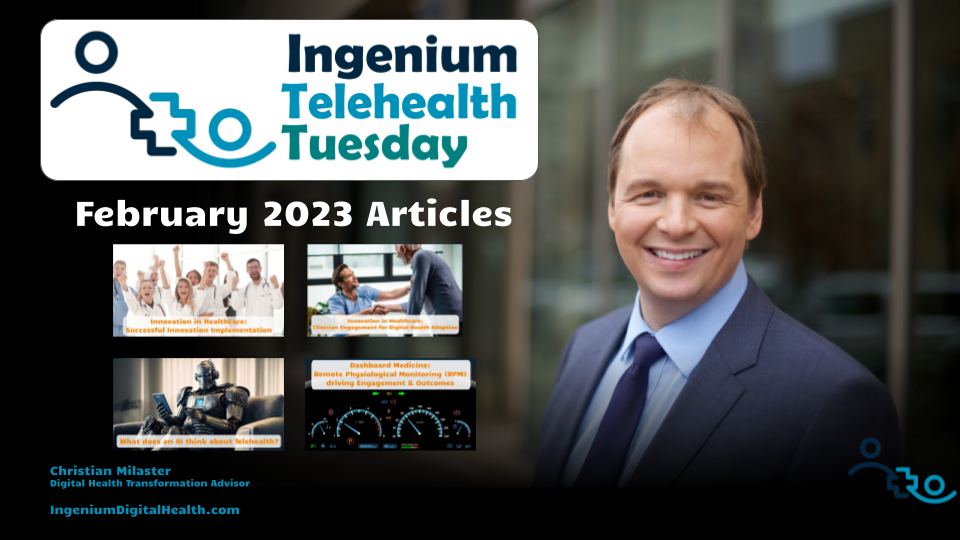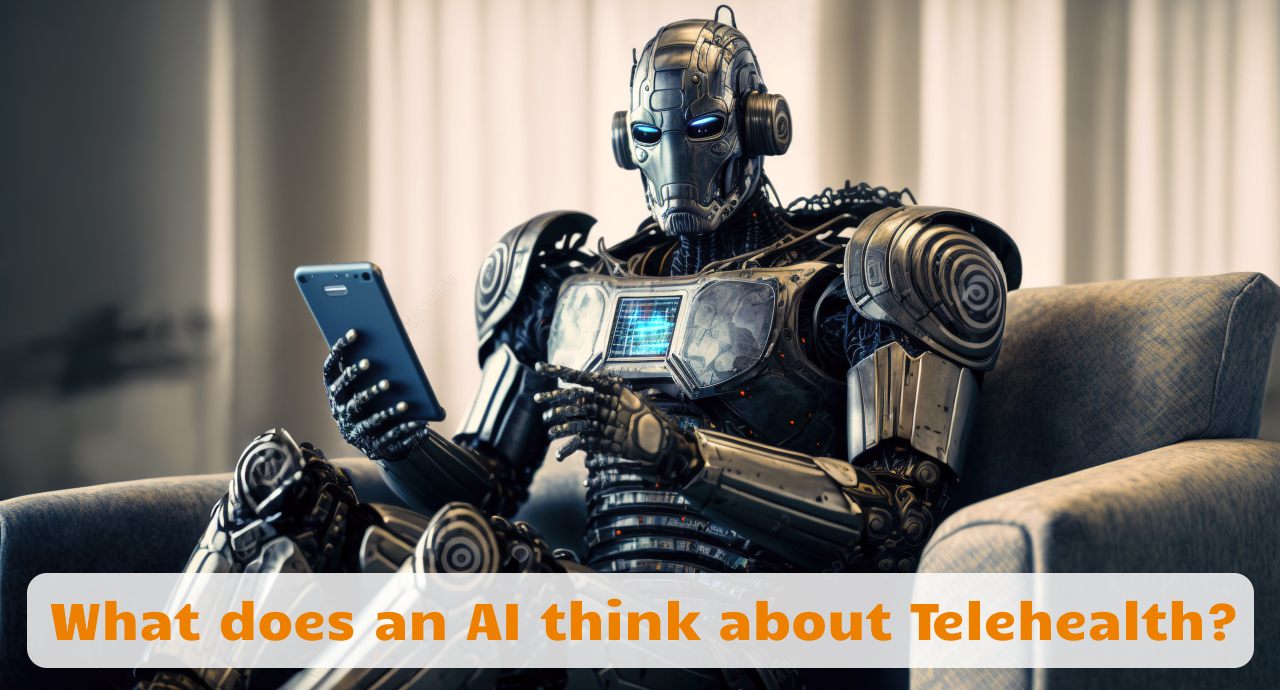
In February Telehalth Tuesday we continued the “Innovation in Healthcare” series with two more articles focused on the implementation of digital health solutions in general and with a specific focus on Clinician Engagement.
The third article described my fascinating and entertaining experiments with the new AI chat bot, ChatGPT.
Rounding out the four articles in February was an overview of Remote Physiological Monitoring.
Enjoy your readings!
P.S.: Given my article on ChatGPT, what question about AI and Telehealth would you like me to ponder in an upcoming Telehealth Tuesday article? Send me a quick email to let me know.
Innovation in Healthcare: Successful Innovation Implementation
The successful implementation of digital health innovation requires a set of proven approaches including rigorous project management, deliberate user training, conscious performance management and leadership. This is part 5 of the “Innovation in Healthcare” series.
Innovation in Healthcare: Clinician Engagement
The successful adoption of digital health requires the engagement of clinicians, a focus on workflow over technology, and an emphasis on change management. This article describes the 5 phases that clinicians need to be involved with.
What does an AI think about Telehealth?
I finally registered for ChatGPT and asked a few questions about telehealth. Here are its answers and what I think of them. And there’s a limerick, too!
Dashboard Medicine: Remote Physiological Monitoring (RPM)
Remote Physiological Monitoring is a great virtual care modality to keep patients out of the hospital and to manage their chronic decisions. Here’s a primer on the value, benefits, and the system of RPM.




